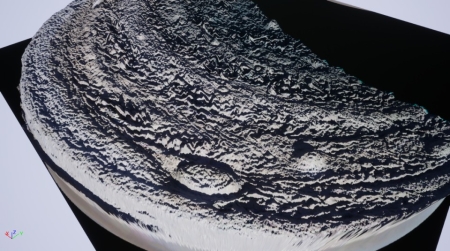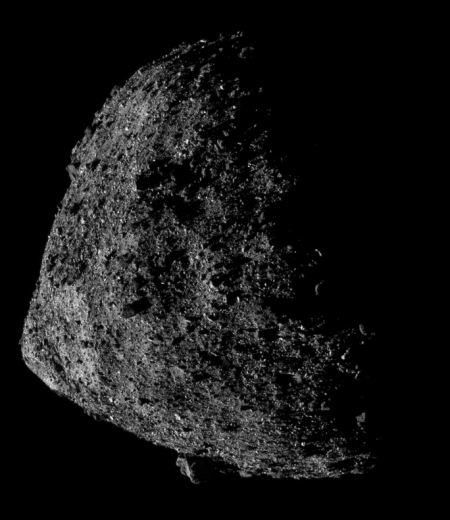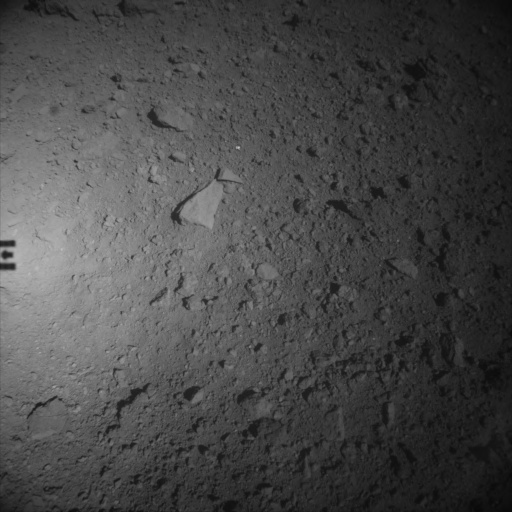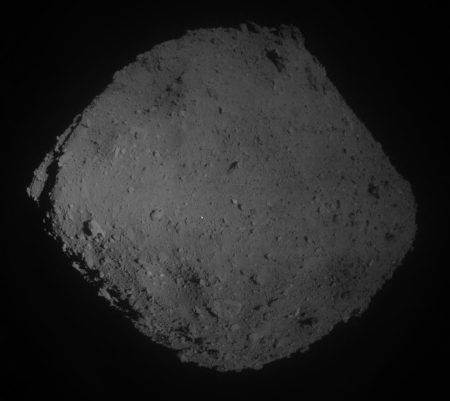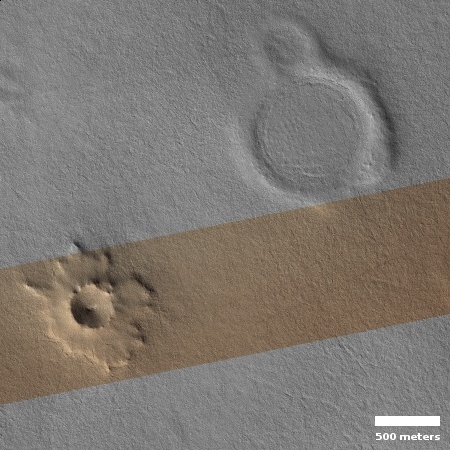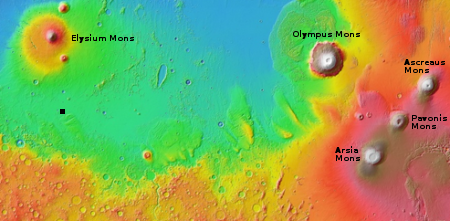The make-up and temperature of Uranus’s rings

New radio images taken by the ground-based telescopes by the ALMA and VLT telescopes in Chile have allowed scientists to better determine the make-up and temperature of the rings of Uranus.
The image above is from their paper. From the caption:
Images of the Uranian ring system at 3.1 mm (ALMA Band 3; 97.5 GHz), 2.1 mm (ALMA Band 4; 144 GHz), 1.3 mm (ALMA Band 6; 233 GHz), and 18.7 μm (VLT VISIR; 100 THz)…The planet itself is masked since it is very bright compared to the rings.
From the article above:
The new images taken by the Atacama Large Millimeter/submillimeter Array (ALMA) and the Very Large Telescope (VLT) allowed the team for the first time to measure the temperature of the rings: a cool 77 Kelvin, or 77 degrees above absolute zero — the boiling temperature of liquid nitrogen and equivalent to 320 degrees below zero Fahrenheit.
The observations also confirm that Uranus’s brightest and densest ring, called the epsilon ring, differs from the other known ring systems within our solar system, in particular the spectacularly beautiful rings of Saturn.
“Saturn’s mainly icy rings are broad, bright and have a range of particle sizes, from micron-sized dust in the innermost D ring, to tens of meters in size in the main rings,” said Imke de Pater, a UC Berkeley professor of astronomy. “The small end is missing in the main rings of Uranus; the brightest ring, epsilon, is composed of golf ball-sized and larger rocks.” [emphasis mine]
The mystery is why this ring has no dust, something not seen with any other ring system in the solar system, including the inner rings of Uranus itself..

New radio images taken by the ground-based telescopes by the ALMA and VLT telescopes in Chile have allowed scientists to better determine the make-up and temperature of the rings of Uranus.
The image above is from their paper. From the caption:
Images of the Uranian ring system at 3.1 mm (ALMA Band 3; 97.5 GHz), 2.1 mm (ALMA Band 4; 144 GHz), 1.3 mm (ALMA Band 6; 233 GHz), and 18.7 μm (VLT VISIR; 100 THz)…The planet itself is masked since it is very bright compared to the rings.
From the article above:
The new images taken by the Atacama Large Millimeter/submillimeter Array (ALMA) and the Very Large Telescope (VLT) allowed the team for the first time to measure the temperature of the rings: a cool 77 Kelvin, or 77 degrees above absolute zero — the boiling temperature of liquid nitrogen and equivalent to 320 degrees below zero Fahrenheit.
The observations also confirm that Uranus’s brightest and densest ring, called the epsilon ring, differs from the other known ring systems within our solar system, in particular the spectacularly beautiful rings of Saturn.
“Saturn’s mainly icy rings are broad, bright and have a range of particle sizes, from micron-sized dust in the innermost D ring, to tens of meters in size in the main rings,” said Imke de Pater, a UC Berkeley professor of astronomy. “The small end is missing in the main rings of Uranus; the brightest ring, epsilon, is composed of golf ball-sized and larger rocks.” [emphasis mine]
The mystery is why this ring has no dust, something not seen with any other ring system in the solar system, including the inner rings of Uranus itself..

